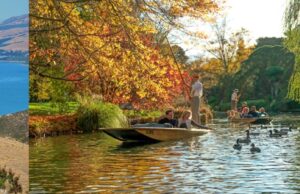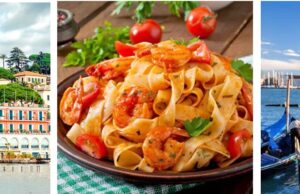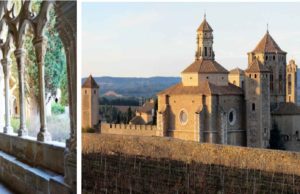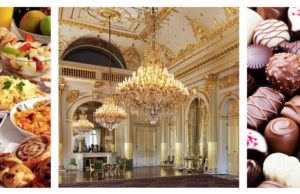
WoT's Hot
The day began with a Merc taxi being sent all the way to Barcelona to pick us up to be transported to visit the Torres winery at Vilafranca del Penedes. We had heard that the visit itself was worth it, casually in conversation. But nothing could prepare us for the sight and tour of one of Spain’s foremost vineyards. As they say, ignorance surely was bliss in the case of Torres.
Vilafranca was undoubtedly a game changing winery, a visual delight and an epitome of the innovations that are commensurate with the standards set by the Torres Company for decades. Set in the picturesque Catalonian wine country amidst the rolling verdant countryside, the name itself conjures up an ethereal quality that one gets to witness on the silver screen. Blending in the landscape, an incredible feat of environmental architecture, the winery is all but impossible to notice until you get up, close and personal, actually in it.
Vilafranca was a soothing yet informative experience that started with a half-hour presentation, setting the mood and the tone for our visit. The hacienda-style Spanish villa standing adjacent to the winery was the official residence of Miguel Torres, Fifth generation, Managing Director of one of the richest wine-making families in the world. The simplistic style, blending into the Catalonian moors, undoubtedly boasted all the trappings of a millionaire’s home, yet presented a Spartan exterior that was truly elegant, to say the least. It was like a picture postcard perfect, imposing enough to demand respect for its privacy.
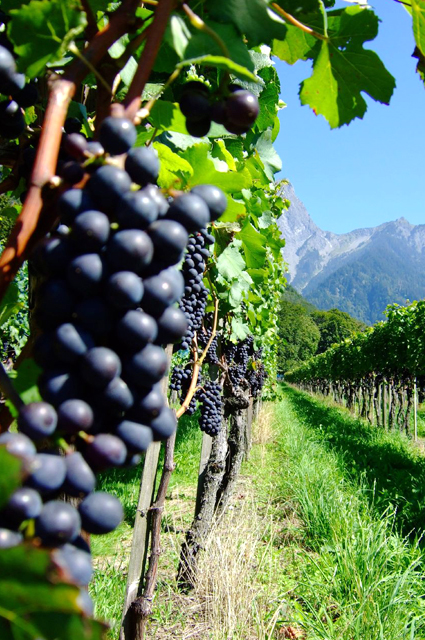 The vines themselves were arranged in neat trimmed rows, intertwined between equal spaces and heights, making us wonder whether this was actually a natural phenomenon or an optical illusion. But what really catches the eye are blooming roses of incredible lush growth at the edge of each and every row of plants. As we went through the motions, we were informed that they had a singularly important scientific function to perform and were not mere decorative flower beds. The rose bushes were the first line of defense to protect the rows of plants from unwanted pests if they were to attack the plants, thus the bushes were the first to be affected. Therefore adequate steps would be taken to control the menace and prevent the plants from the disease. This was a natural prevention to protect the carefully nurtured plants!! How innovative and thoughtful to take a leaf out on Nature’s bountiful guide and apply it to commerce. Simultaneously the visual aspect of the area would be greatly enhanced by the natural beauty of roses of every color. Reds, pinks, yellows, dark reds were dotting the fields and surely made a pretty sight to behold.
The vines themselves were arranged in neat trimmed rows, intertwined between equal spaces and heights, making us wonder whether this was actually a natural phenomenon or an optical illusion. But what really catches the eye are blooming roses of incredible lush growth at the edge of each and every row of plants. As we went through the motions, we were informed that they had a singularly important scientific function to perform and were not mere decorative flower beds. The rose bushes were the first line of defense to protect the rows of plants from unwanted pests if they were to attack the plants, thus the bushes were the first to be affected. Therefore adequate steps would be taken to control the menace and prevent the plants from the disease. This was a natural prevention to protect the carefully nurtured plants!! How innovative and thoughtful to take a leaf out on Nature’s bountiful guide and apply it to commerce. Simultaneously the visual aspect of the area would be greatly enhanced by the natural beauty of roses of every color. Reds, pinks, yellows, dark reds were dotting the fields and surely made a pretty sight to behold.
A small electric solar car – train, driven by Maria, was next. We were shepherded into one of the compartments and driven round the entire winery complex. The brilliant innovation of storing the wine well-below the ground to maintain temperature without using energy left us in awe. The entire place was covered with a mixture of sand and gravel to preserve the natural coolness of the region and aid the aging of wine. To counter the dependence on the vagaries of nature, Torres has introduced several innovations which were on display for all visitors.
Water harvesting in a massive reservoir capable of storing 11,000,000 liters of water, solar panels to reduce consumption and the carbon footprint, strong R&D to introduce different bottles that give off less CO2, using robots to prevent contamination and speed up the entire process, setting up a wind park that produces energy and converting biomass into char to fire its boilers. This considerably reduces the production of CO2 as well as energy requirements.
As Maria drove into the cellars, an automated 3D visual story started flashing on the walls. Extremely educative, it instructs visitors as to how the wine is prepared and the aroma verified. It emphasizes the earth and plant relationship with the weather as the catalyst that goes to produce a great wine year. In pitch darkness, Maria’s driving skills are exemplary. Then the cellar itself, with its huge capacity of close to 14,000 oak casks is undoubtedly a visually memorable experience. The old abandoned cellar with its musty odor, a throwback to the past, stretching like the proverbial tunnel to the center of the Earth, where visitors are invited to remove stoppers, open casks and inhale the aroma from a variety of different wines is a really heady treat. The museum itself is a walk through time, where one gets to know how the patriarch went from the ritualistic wine-making and transformed it into a million dollar business over the years. The implements, the strategy, the pitfalls, the effort is all there for one to see and soak in. If memory serves me right, the car in which the patriarch and his Alsatian, a beautiful specimen, used to make his marketing journeys, is also displayed. A vast array of awards and accolades bear testimony to the dizzying heights the company has reached. The entire experience is incredibly gratifying to the discerning vintner. 60 million bottles a year!
Part 11 will continue our journey through one of the most fascinating and ecologically sound vineyards in the world.
SaveThe day began with a Merc taxi being sent all the way to Barcelona to pick us up to be transported to visit the Torres winery at Vilafranca del Penedes. We had heard that the visit itself was worth it, casually in conversation. But nothing could prepare us for the sight and tour of one of Spain’s foremost vineyards
What to read next
Featured articles

Welcome Festive Season in Glam, Latin Quarters Launches new #PujoBling Collection with Monami Ghosh
by WOT




































